Bodybuilding.com has long been a trusted resource for fitness enthusiasts, providing expert advice on training and programming.
With their new Elite Series supplements, the company officially merges the same level of expertise and precision to their formulations. We recently covered the their Elite Ultimate Pre-Workouts, which showcase the company's commitment to delivering high-quality products that meet the needs of serious athletes and fitness enthusiasts.
Today, we have an interesting twist on a popular category:
ELITE Thermo + BCAA
Bodybuilding.com's Elite Thermo + BCAA is a supplement combining aspects of muscle recovery, energy production, thermogenesis all in the same product – ideal for anyone who's on a cut and wants to avoid feeling overtrained and run down.
A thermogenic intra-workout with MitoBurn
It includes MitoBurn from NNB Nutrition, which is the hot hand in metabolic-boosting ingredients lately, whose science is covered below. Combining it with some grains of paradise, and we have the incredible one-two "WAT to BAT" stack that we've been talking about all year, helping to convert white adipose tissue to the more metabolically-active brown adipose tissue.
Let's get into how it works, but first, check the PricePlow news and deals:
Bodybuilding.com ELITE Thermo + BCAA – Deals and Price Drop Alerts
Get Price Alerts
No spam, no scams.
Disclosure: PricePlow relies on pricing from stores with which we have a business relationship. We work hard to keep pricing current, but you may find a better offer.
Posts are sponsored in part by the retailers and/or brands listed on this page.
This area is reserved for Team PricePlow's upcoming videos.
Subscribe to our channel and sign up for notifications so you catch it when it goes live!
Ingredients
In a single 1-scoop (9.7 gram) serving of Elite Thermo + BCAA from Bodybuilding.com, you get the following:
-
Micronized BCAA 2:1:1 – 5,000 mg
The 2:1:1 ratio in this ingredient name refers to the ratio of leucine, isoleucine, and valine, the three branched-chain amino acids, which are famed for their anabolic and anti-catabolic effects.
Although all three are anti-catabolic[1-3] and can improve athletic endurance,[4-6] leucine is the best at stimulating the body's anabolic response.[7-9] Leucine does this by activating the mammalian target of rapamycin (mTOR),[10-12] which is your body's anabolic master switch.
Our leucine requirement increases as we age, making BCAA supplementation increasingly important as time goes on.[13]
-
Carnipure (L-Carnitine Tartrate) – 1,500 mg
Carnitine increases the body's rate of fat burning by helping move fatty acid molecules into your cells' mitochondria, the organelles that actually turn fat into energy.[14] Research shows that increased carnitine intake is correlated with fat loss[15,16] and increases insulin sensitivity.[17]
Athletes have higher requirements for carnitine than non-athletes, since intense exercise depletes the body of carnitine,[18] so it makes perfect sense for the compound to show up in this formula. Athletes who supplement with carnitine show lower levels of soreness after exercise, increased oxygen uptake and power output, better circulation, and faster recovery.[19]
The tartrate form of L-Carnitine in Bodybuilding.com ELITE Thermo + BCAA has been shown to improve androgen receptor function,[20,21] which can amplify the effects of testosterone in your body.
-
MitoBurn (L-Baiba) – 250 mg
MitoBurn is a trademarked L-β-Aminoisobutyric Acid (L-BAIBA) developed by NNB Nutrition.
L-BAIBA is a myokine, a category of peptide molecules that are synthesized by human muscles during exercise and have signaling effects in the rest of the body, similar to hormones. BAIBA's role is to instruct cells on how to adapt to the metabolic stress of exercise.
The way it works is that when you start exercising, your body converts the BCAA valine into BAIBA.[14] Once produced, BAIBA is secreted into your bloodstream and circulates through your entire body, alerting your cells that your body is being subjected to physical stress. In response, your cells initiate a series of metabolic adaptations that help mitigate and counteract the potentially damaging effects of exercise.
For example, BAIBA causes the body to burn more fat than usual, and also triggers certain protective mechanisms in bone tissue.[15]
You can probably see where this is going. In theory, BAIBA sounds like exercise in a pill, which has arguably been the holy grail of supplement and medical science, almost since the beginning. So, is it?
Amazingly, the answer from preliminary research appears to be yes.
-
MitoBurn's fat-burning mechanism: WAT-to-BAT conversion
For example, BAIBA supplementation can also boost the conversion of white adipose tissue (WAT) to brown adipose tissue (BAT). This is desirable because BAT can increase the body's metabolic rate through a process called non-shivering thermogenesis[19] – and WAT-to-BAT conversion is one of the many metabolic benefits typically associated with exercise.[22]
WAT to BAT: How to Boost Thermogenic Brown Adipose Tissue with Diet, Exercise, and Supplements like NNB Nutrition's MitoBurn and CaloriBurn GP (and others)
To understand why it's better to have more BAT than WAT, we should talk a little bit about the different roles these two types of adipose tissue play in your body. WAT is your body's long-term emergency energy storage organ, and is only burned for fuel when your body has no other source of calories available[23] – e.g., famine conditions.
While it's technically also stored body fat, BAT doesn't really exist as a metabolic fuel reserve – it does burn energy, but in a process called non-shivering thermogenesis (NST). The point of NST is not to power critical metabolic functions, but rather, to maintain your body's core temperature in the face of cold temperatures.[23]
Thus, increased NST via increased BAT leads to a higher total daily energy expenditure (TDEE), defined as the total number of calories your body burns in a day. A higher TDEE from NST can lead to faster weight loss (assuming, of course, that you either maintain or decrease your daily caloric intake as well).[24,25]
Another amazing benefit is that because BAT takes up glucose and fatty acids for fuel, having more BAT can directly lower blood glucose and triglycerides.[26]
-
The metabolic machinery behind NST
So what exactly makes BAT different from WAT? The answer lies in their very names. BAT looks brown under a microscope because it's chock full of mitochondria, which block most of the light from passing through the slide. WAT, because it's comparatively devoid of mitochondria, appears white or translucent.
In other words, BAT's mitochondrial density is much higher than WAT's.[27] When your body converts WAT to BAT, what's really happening is new mitochondria are growing inside your WAT.
Your BAT's mitochondria express a protein called uncoupling protein 1 (UCP1), which basically short circuits the electron transport chain (ETC) your mitochondria use to generate energy through electrical potential gradients. Just like shorting an electrical circuit causes it to arc and radiate heat, UCP1 does the same in your mitochondria.[28,29]
Adiponectin can activate AMPK and PPARα in the liver and skeletal muscle.[30] We recently explored PPARα in our articles on BAIBA and MitoBurn.
That's the reality the term uncoupling in UCP1's name is supposed to describe – it decouples your body's metabolic activity from physical inputs like exercise. This makes it a potentially powerful tool for increasing your TDEE.
The mechanisms behind BAIBA's conversion of WAT to BAT are peroxisome proliferator-activated receptor-gamma coactivator (PGC-1) alpha and peroxisome proliferator-activated receptor (PPAR) alpha upregulation.[19,31]
-
BAIBA research
Now that we've dispensed with the theory behind BAIBA's efficacy, let's see what real-world studies on BAIBA supplementation have found.
So far, BAIBA has been shown to:
MitoBurn (L-BAIBA) has flipped the fat burner niche on its head by supplying more of this exercise-based signaling molecule to dieters
- Accelerate fat burning[14,16,19,21,32]
- Increase ketone synthesis[17]
- Convert WAT into BAT[19,21]
- Increase insulin sensitivity and lower blood glucose[14,20,32]
- Decrease systemic inflammation[21]
- Improve cholesterol and triglycerides[14,32]
- Increase bone density[18]
- Support kidney function[33]
-
Why MitoBurn is special
Given the list of powerful benefits, it's no surprise that many attempts have been made to synthesize an orally bioavailable BAIBA supplement. Unfortunately, it has proven difficult – among other things, only the L-isomer of BAIBA (L-BAIBA, as opposed to D-BAIBA and R-BAIBA) has any effect on human metabolism.[14,16]
That's where MitoBurn comes in – it's a standardized, stabilized formulation of pure L-BAIBA.
We wrote a feature article about this – read BAIBA: Weight Loss Ingredient Generates Exercise in a Pill?! to learn more.
-
-
Natural Caffeine (from Camellia sinensis) – 150 mg
Caffeine is one of those ingredients that hardly needs an introduction. This methylxanthine stimulant, capable of crossing the blood-brain barrier, can have profound effects on human cognition and metabolic function.
Caffeine increases energy expenditure by roughly an extra 0.15 calories per minute. Not huge, but we'll take it! But what happens when the dose gets absurd?
Although it's not the biggest deal, and we're not aware of any research testing the difference between natural and synthetic caffeine, we do like seeing the natural stuff used because anecdotally, many consumers report a smoother, steadier, more sustained boost of energy compared to the synthetic versions.
Besides fighting fatigue by inhibiting the action of adenosine,[34,35] caffeine can also improve cellular metabolic function by inhibiting phosphodiesterase, an enzyme responsible for breaking down cyclic adenosine monophosphate (cAMP).[34,35] This naturally raises cAMP levels, and more cAMP means cells burn more lipids and carbohydrates for energy,[36] leading to increased daily caloric burn.
By this mechanism, caffeine helps drive thermogenesis — the burning of calories as heat. Upregulating thermogenesis via caffeine consumption seems to help drive fat loss[37,38] and a 2019 meta-analysis of 13 randomized studies concluded that caffeine consumption is associated with a mean reduction in weight, body mass index, and fat mass.[39]
-
Raw Coconut Water – 150 mg
Need a potent pre-workout to try? Bodybuilding.com has a new lineup of Elite Ultimate PRE-Workouts, one with stims and the other stim-free, and the stim-free base is just what we've been looking for with Peak ATP and Nitrosigine!
We lose electrolytes in sweat during exercise, and replenishing them can be tricky, especially when dieting. Decreased caloric intake naturally means decreased electrolyte intake as well. Unless, that is, we take conscious steps to up our electrolytes. That's where zero-calorie ingredients like coconut water come in.
Coconut water is naturally rich in electrolytes,[40] and research even shows that it is just as good at improving hydration as purpose-built commercial hydration drinks.[41]
The consequences of not keeping electrolytes topped off can be pretty bad. Since muscles need electrolytes to conduct electrical impulses, getting too low on electrolytes can lead to issues like cardiac arrhythmia[42] or, in extreme cases, a heart attack.[43]
Note: Low-carb dieters need to be particularly aware of electrolyte requirements, as reducing carb intake actually increases your body's need for water and electrolytes.[44]
-
Grains of Paradise (Aframomum Melegueta) – 40 mg
Grains of paradise is a pepper plant native to west Africa.
It naturally contains high amounts of a spicy flavor constituent called 6-paradol, which is great since 6-paradol can positively affect body composition. The basic mechanism of action is related to the WAT/BAT interplay we discussed in the MitoBurn section – whereas MitoBurn helps convert WAT to BAT, grains of paradise helps stimulate NST in existing BAT.[45,46]
Grains of paradise supplementation has been shown to significantly reduce visceral fat levels.
So far there have been two key studies showcasing the fat-burning potential of grains of paradise.
In one placebo-controlled study, researchers measured total energy expenditure (i.e. calories burned in a given period of time) in 19 healthy men aged 20 to 32 who took 40 grams of grains of paradise extract after the subjects had taken 40 milligrams of grains of paradise extract. The study authors found that compared to the placebo group, the grains of paradise group burned significantly more calories in response to a slightly cold temperature,[45] which indicates increased BAT activity.
Another study in women aged 20 to 22 found similar results[46] – and, moreover, that grains of paradise supplementation can decrease visceral fat in the body,[47] a particularly harmful type of fat that's closely linked to insulin resistance, the metabolic syndrome, and diabetes.[47] Just to give you an idea of how damaging visceral fat can be, one study found that surgically removing visceral fat in rats completely prevented age-related metabolic decline.[48]
Synergy with MitoBurn
The big news here is that it's synergistic with MitoBurn! As mentioned above, MitoBurn helps with the browning of fat, while grains of paradise boosts it.
You can read more in our article titled "Grains of Paradise: Fat Fighting Spice of the Goddesses" and see how this synergizes with MitoBurn in our article, "WAT to BAT: A High-Metabolism Guide to Brown and White Fat".
Conclusion
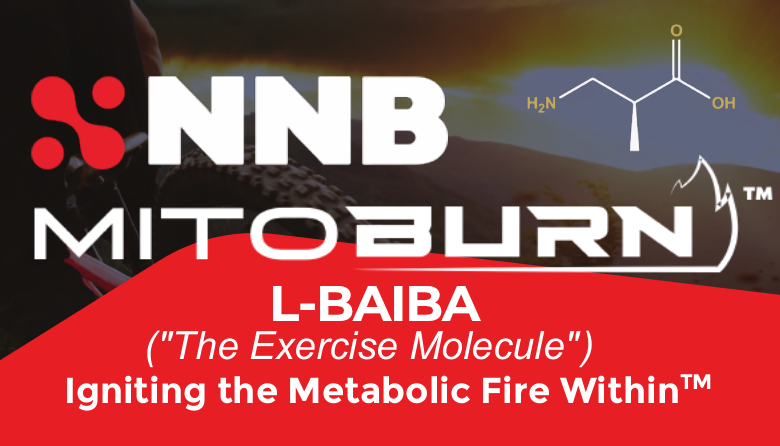
NNB Nutrition has finally brought us a trusted and tested form of L-BAIBA, which we call an "exercise signal" that kickstarts incredible metabolic processes! It's known as MitoBurn and it helps kick-start the 'exercise program'!
Not much else to say about Bodybuilding.com's ELITE Thermo + BCAA, and in this case, that's a good thing. These ingredients simply work. BCAAs are one of the most cost-effective anti-catabolic support ingredients on the market, and we love seeing NNB's heavy-hitter fat burner MitoBurn get some love in intra-workout applications -- especially paired next to grains of paradise for that "WAT to BAT" assist.
Another thing we like about this product is the moderate dose of caffeine used —150 milligrams is enough to be effective, but not too much to cause issues. Many like this with a stim-free pre-workout (like Bodybuilding.com Elite's) or a lighter-stim pre-workout to keep the energy and thermogenesis at a high level.
Bodybuilding.com ELITE Thermo + BCAA – Deals and Price Drop Alerts
Get Price Alerts
No spam, no scams.
Disclosure: PricePlow relies on pricing from stores with which we have a business relationship. We work hard to keep pricing current, but you may find a better offer.
Posts are sponsored in part by the retailers and/or brands listed on this page.
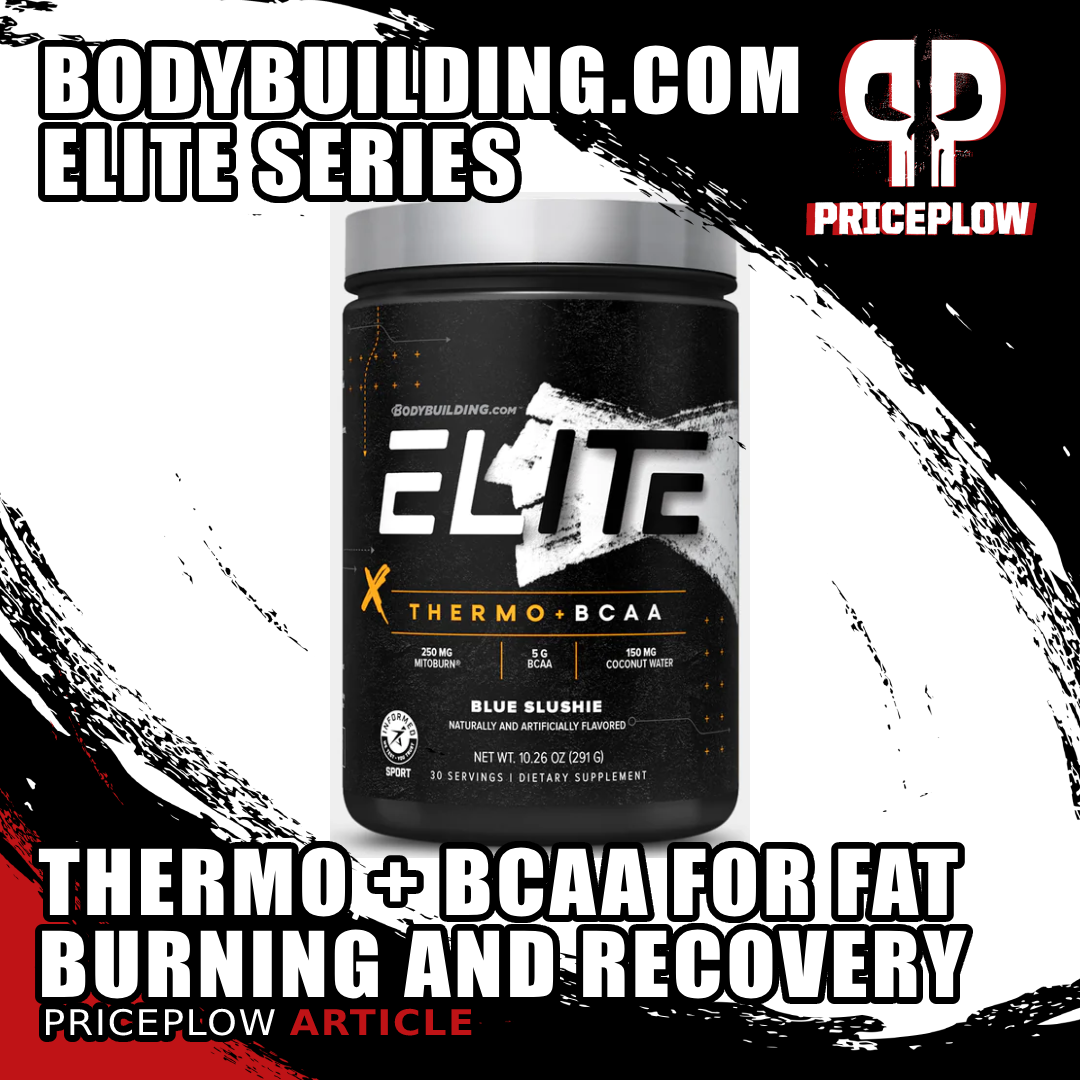
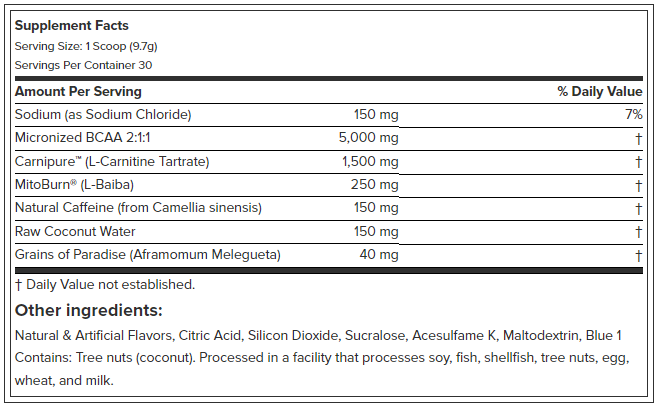
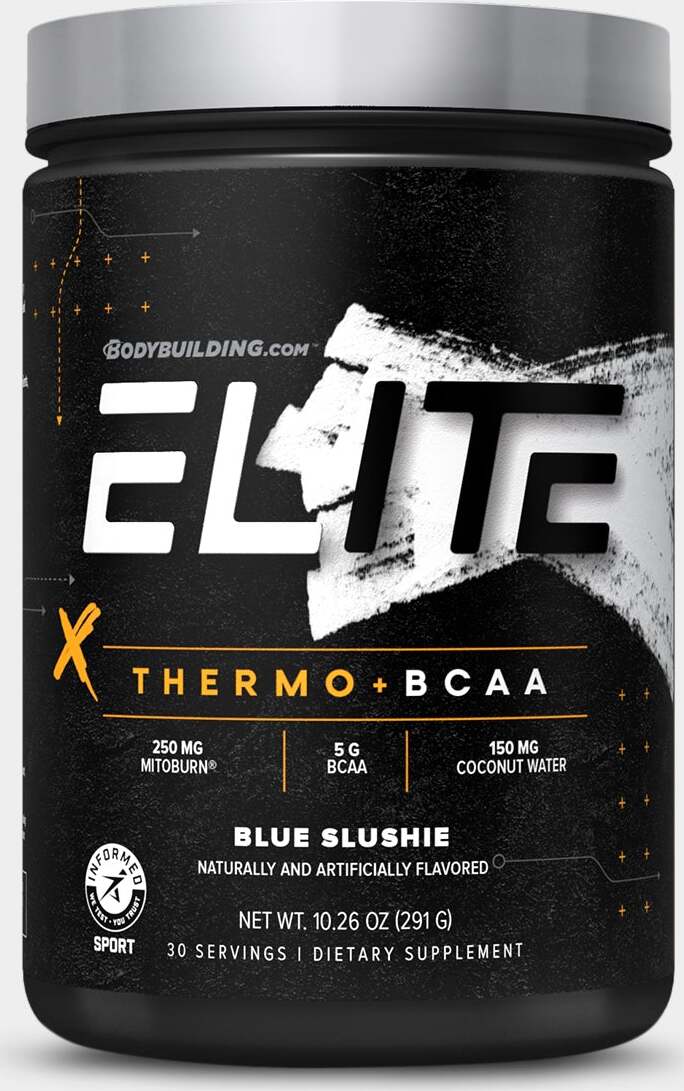

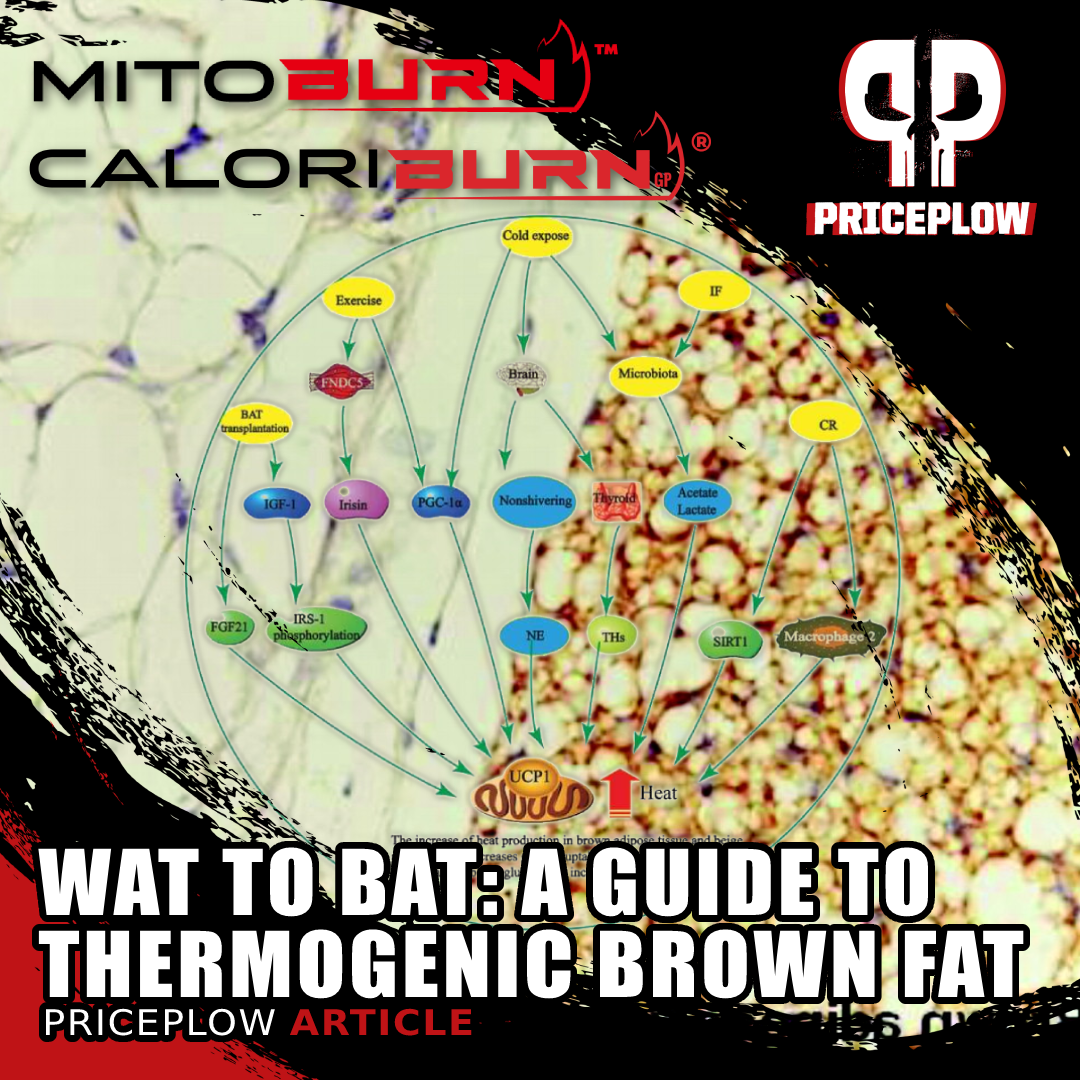
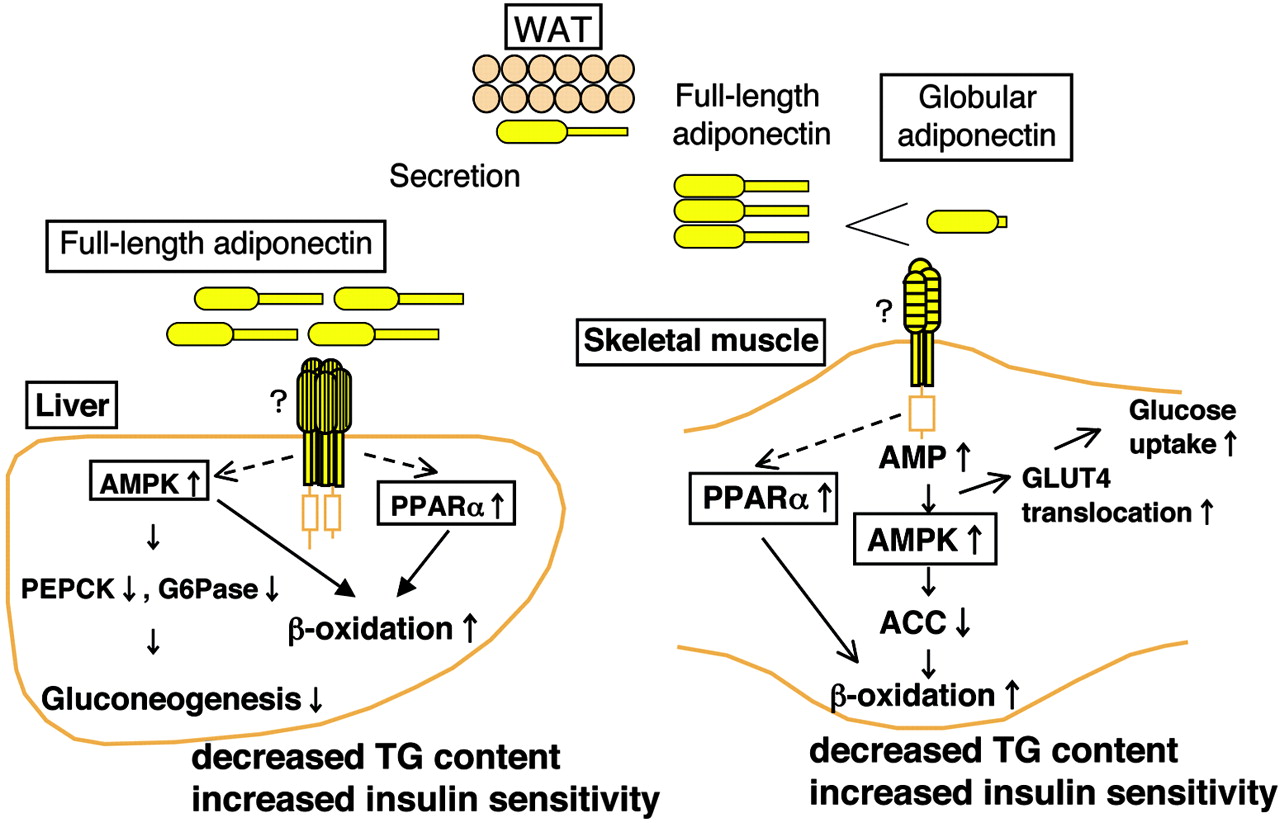
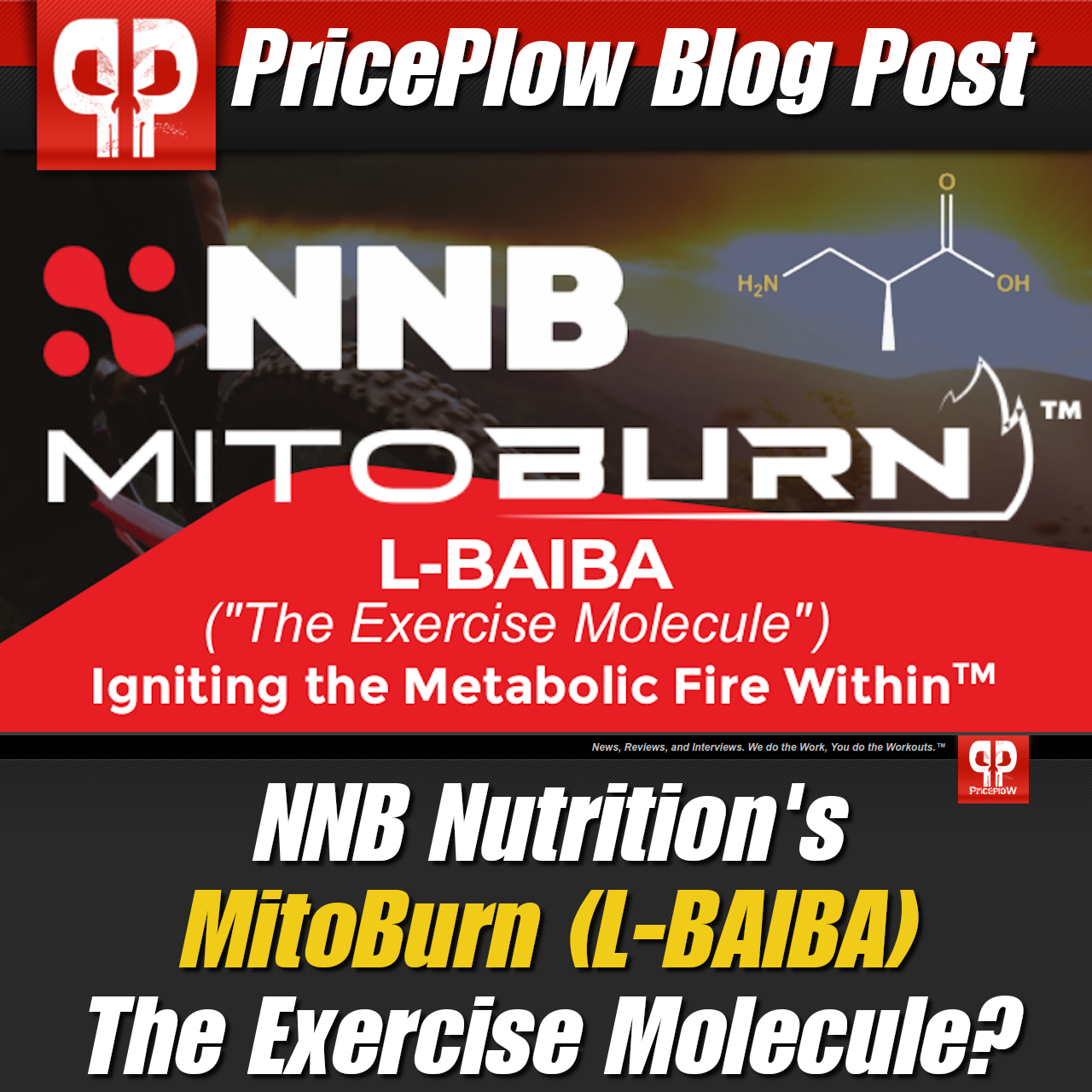
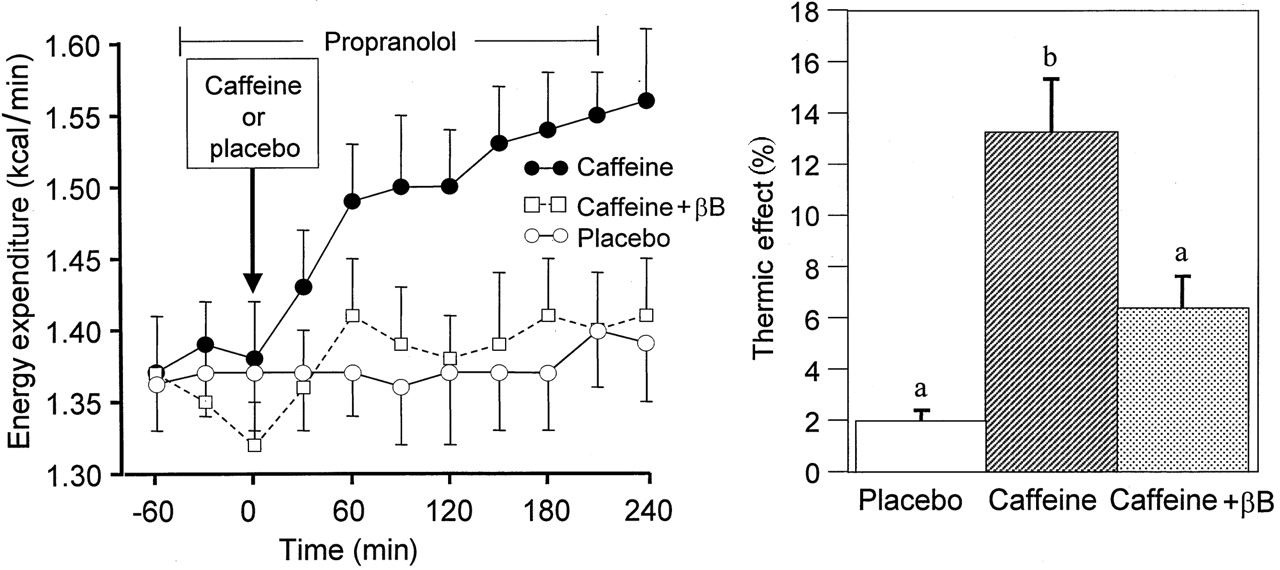
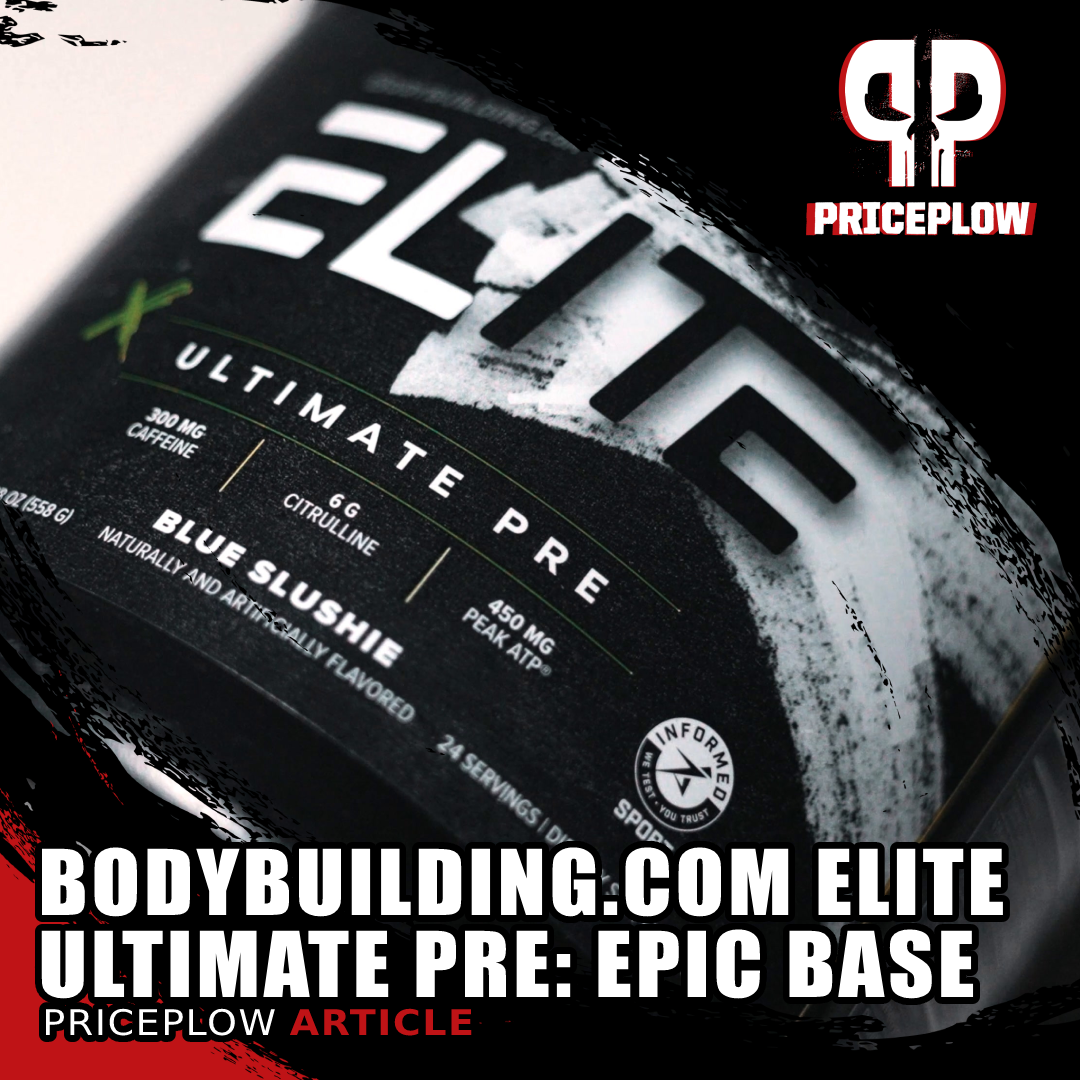
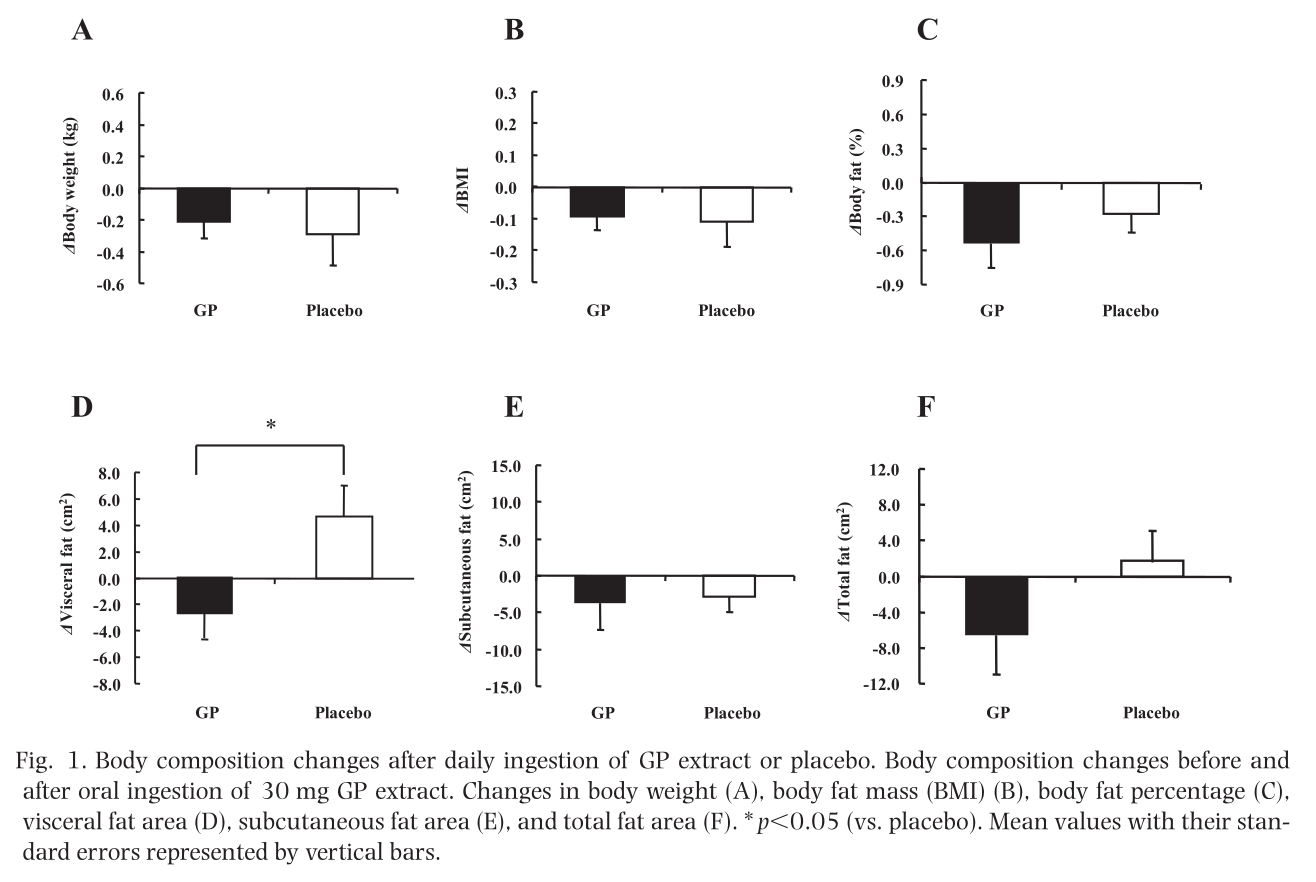


Comments and Discussion (Powered by the PricePlow Forum)